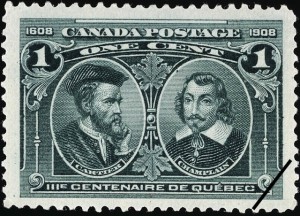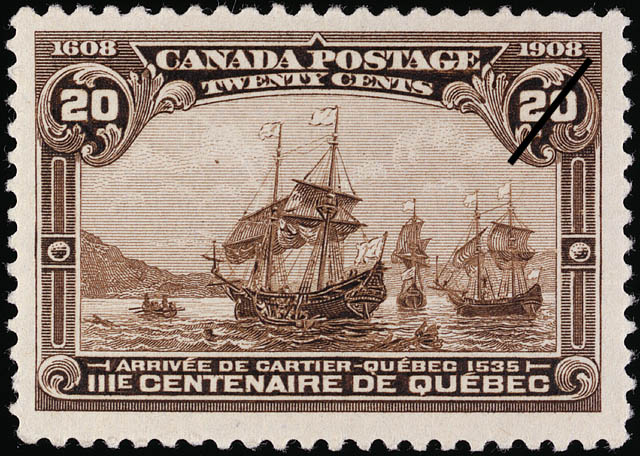On today’s date in 1535, the second voyage of Breton explorer Jacques Cartier arrived at the Iroquois village of Stadacona, near present-day Québec, Qué., where he met Chief Donnacona while traversing the St. Lawrence River.
Cartier’s three ships were called the Grande Hermine, the Petite Hermine and the Emerillon, and not wanting to linger in Stadacona, Cartier made known his desire to push upriver to Hochelaga, which was another Laurentian Iroquois settlement, according to Jon Parmenter’s 2010 book The Edge of the Woods.
Cartier found no willing guides among his Stadaconan hosts.
“After a preliminary discussion with Donnacona on September 15, 1535 (which Cartier believed had established ‘a marvelous stedfast league of friendship’), Donnacona clarified the nature of the arrangements in a formal ceremony two days later at the site of Cartier’s anchored vessels,” writes Parmenter.
“Following a round of singing and dancing, Donnacona moved all his people to one side, then drew ‘a ring in the sand, [and] caused the Captain [Cartier] and his men to stand in it.’ He then presented Cartier a gift of three Stadaconan children, which Taignoagny explained were offered to Cartier (as a sign of alliance) on the condition that he not travel to Hochelaga. The spatial gesture represented by the ring drawn in the sand, combined with the offer of children, represented the Stadaconans’ conditional offer of allegiance, an offer that depended on Cartier accepting their power to control his freedom of movement and binding himself as an ally of the community with kinbased obligations of reciprocity.”
Later that year, Cartier built a fort at the site, where he stayed for about a year while claiming the area for France and calling it “Canada,” which was an alteration of the Iroquois word “kanata,” which means village or settlement.
Québec city (or “Ville de Quebec” in French) is named after the St. Lawrence River promontory by which it’s located. In fact, “Kebec” is an Algonquin word meaning “where the river narrows.”

The 1908 ‘Tercentenary’ series also features Cartier alongside fellow colonist Samuel de Champlain on a one-cent stamp.
CANADIAN CARTIER STAMPS
In 1908, Canada’s Post Office Department (now Canada Post) commemorated Cartier’s arrival at Québec with a 20-cent stamp (Scott #103) marking the 300th anniversary of the founding of Québec.
The stamp depicts Cartier’s second voyage arriving at Quebec on Sept. 14, 1535, with his three vessels docking. Printed by the American Bank Note Company in Ottawa, the stamp had a print run of 304,200.
In that same “Québec Tercentenary” series, Cartier was also commemorated alongside Samuel de Champlain on a one-cent stamp (SC #97).
This issue features portraits based on French artist François Riss’ paintings done in the Hotel de Ville at St. Malo, France.

